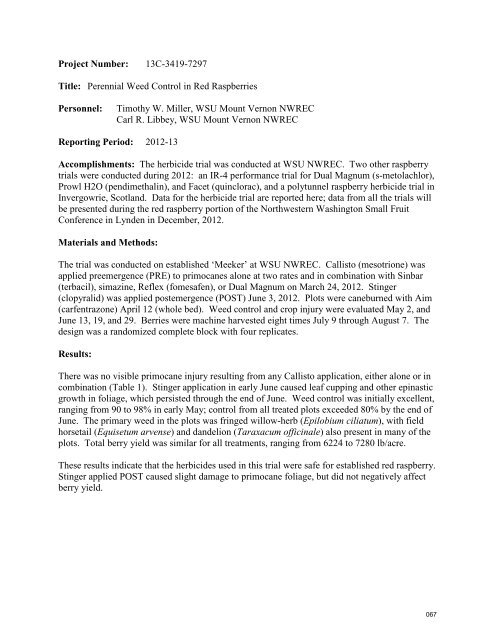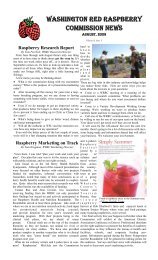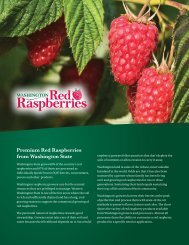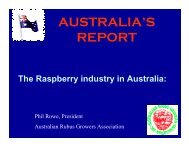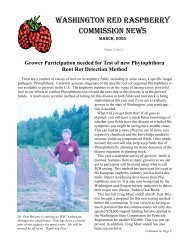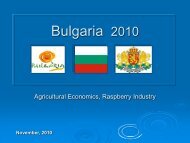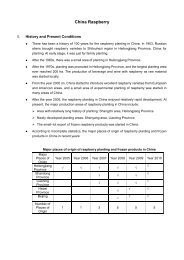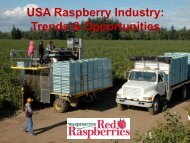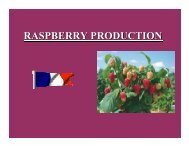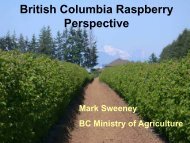2012 - Washington Red Raspberry Commission
2012 - Washington Red Raspberry Commission
2012 - Washington Red Raspberry Commission
Create successful ePaper yourself
Turn your PDF publications into a flip-book with our unique Google optimized e-Paper software.
Project Number:<br />
13C-3419-7297<br />
Title: Perennial Weed Control in <strong>Red</strong> Raspberries<br />
Personnel:<br />
Timothy W. Miller, WSU Mount Vernon NWREC<br />
Carl R. Libbey, WSU Mount Vernon NWREC<br />
Reporting Period: <strong>2012</strong>-13<br />
Accomplishments: The herbicide trial was conducted at WSU NWREC. Two other raspberry<br />
trials were conducted during <strong>2012</strong>: an IR-4 performance trial for Dual Magnum (s-metolachlor),<br />
Prowl H2O (pendimethalin), and Facet (quinclorac), and a polytunnel raspberry herbicide trial in<br />
Invergowrie, Scotland. Data for the herbicide trial are reported here; data from all the trials will<br />
be presented during the red raspberry portion of the Northwestern <strong>Washington</strong> Small Fruit<br />
Conference in Lynden in December, <strong>2012</strong>.<br />
Materials and Methods:<br />
The trial was conducted on established ‘Meeker’ at WSU NWREC. Callisto (mesotrione) was<br />
applied preemergence (PRE) to primocanes alone at two rates and in combination with Sinbar<br />
(terbacil), simazine, Reflex (fomesafen), or Dual Magnum on March 24, <strong>2012</strong>. Stinger<br />
(clopyralid) was applied postemergence (POST) June 3, <strong>2012</strong>. Plots were caneburned with Aim<br />
(carfentrazone) April 12 (whole bed). Weed control and crop injury were evaluated May 2, and<br />
June 13, 19, and 29. Berries were machine harvested eight times July 9 through August 7. The<br />
design was a randomized complete block with four replicates.<br />
Results:<br />
There was no visible primocane injury resulting from any Callisto application, either alone or in<br />
combination (Table 1). Stinger application in early June caused leaf cupping and other epinastic<br />
growth in foliage, which persisted through the end of June. Weed control was initially excellent,<br />
ranging from 90 to 98% in early May; control from all treated plots exceeded 80% by the end of<br />
June. The primary weed in the plots was fringed willow-herb (Epilobium ciliatum), with field<br />
horsetail (Equisetum arvense) and dandelion (Taraxacum officinale) also present in many of the<br />
plots. Total berry yield was similar for all treatments, ranging from 6224 to 7280 lb/acre.<br />
These results indicate that the herbicides used in this trial were safe for established red raspberry.<br />
Stinger applied POST caused slight damage to primocane foliage, but did not negatively affect<br />
berry yield.<br />
067


